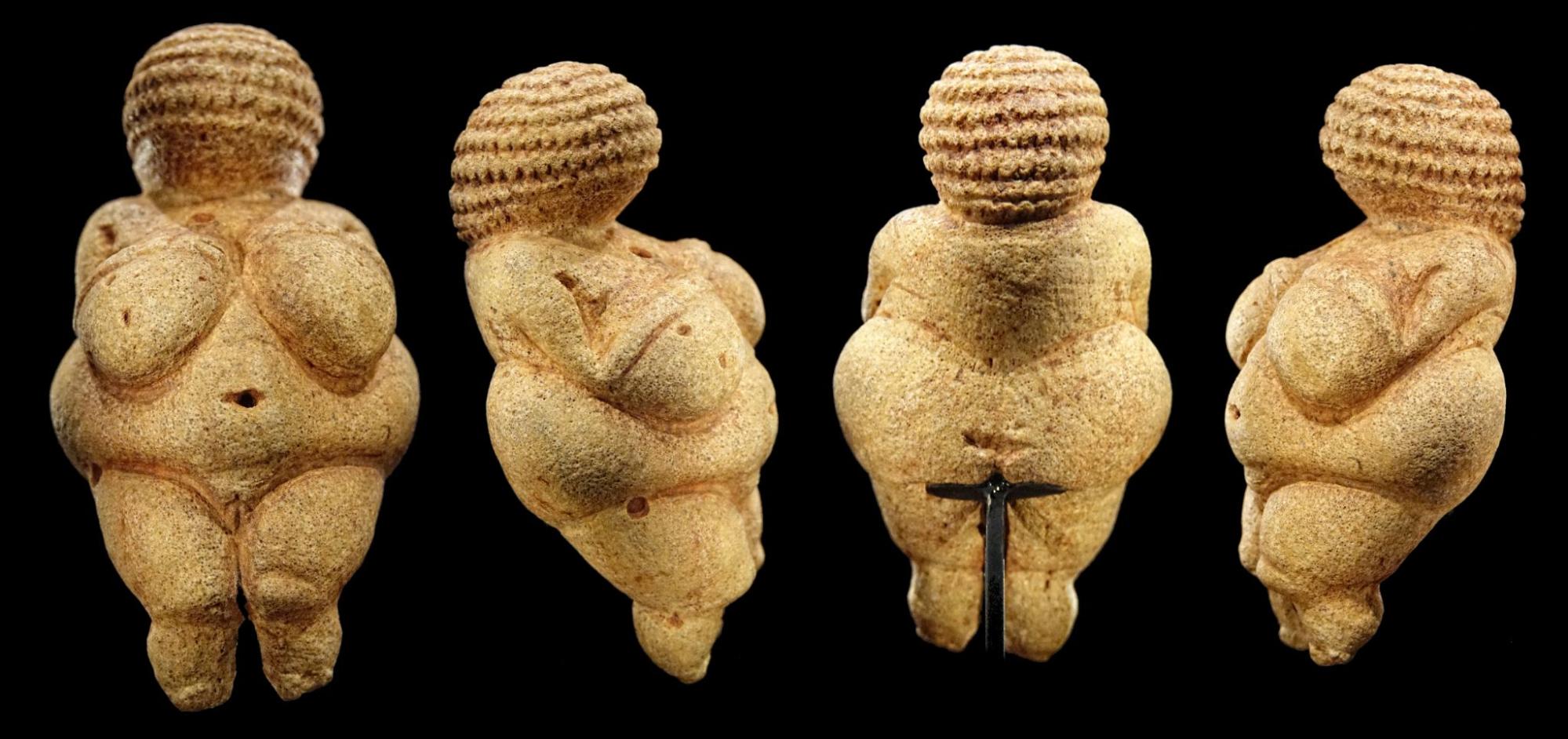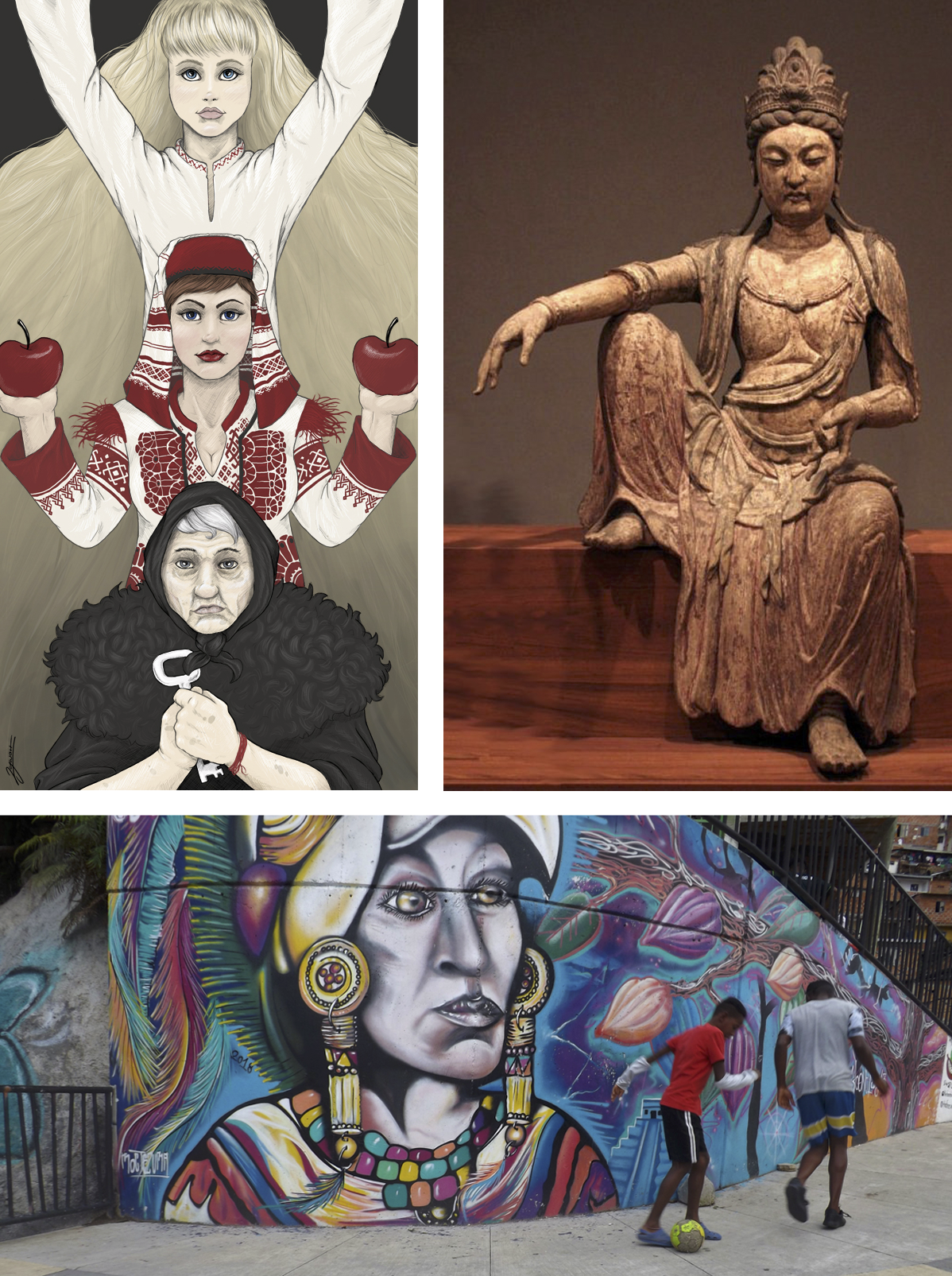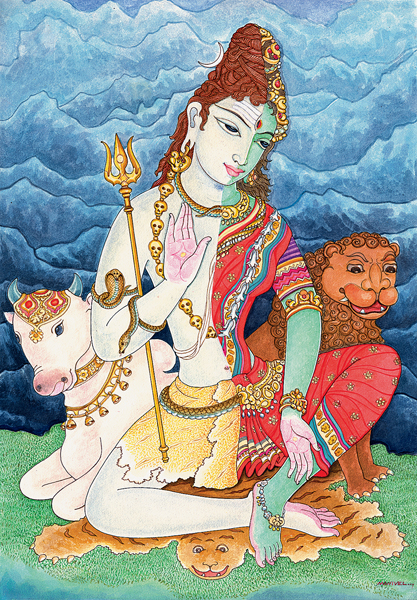9.5 Newer Perspectives on Religion
Many of the foundational ideas of sociology and religion inform sociological perspectives today. However, societies have changed dramatically since the development of sociology as a discipline. As societies change, so do the perspectives that make sense of those changes.
Common to many newer perspectives in sociology is the examination of how members of society have diverse experiences based on our social locations (introduced in Chapter 3). Let’s look at a few of the 20th and 21st century sociological perspectives that have developed on religion: feminist sociology, critical race, and queer theories.
Feminist Sociology of Religion
Feminist sociology examines social roles, experiences, and interests based on gender. It developed as a type of conflict theory in that it focuses on inequalities experienced by women, and more recently by non-binary people. Applied to religion and spiritual belief systems, feminist sociology points out key observations related to leadership, gender roles, belief, and language. This line of focus for feminist sociology is closely linked to feminist theology, the study of the nature of God and religious belief, which centers the religious and spiritual experiences of women.
Feminist religious scholars draw our attention to contradictions in religion. First, they challenge the assumption that men’s religious experiences are more central than women’s experiences. Women have always been central to spiritual rites and rituals. Some of the earliest spiritual icons we find are female. They are small figures, carved of limestone or formed from clay, highlighting breasts and pregnant stomachs. They highlight female fertility, and many archaeologists believe they also served to represent fertility deities of ancient societies (figure 9.14).

A second contradiction is that worldwide, while women are more likely than men to be religious (Pew Research Center 2016), they are less likely to hold leadership positions in religious organizations. Only 11 percent of religious leaders in the United States are women (Masci 2014). In Catholicism, even today, only men can be priests. Many Muslims assert that women should be led only by female imams (worship leaders). It was only in 1972 that a rabbinical seminary formally ordained Sally Priesand, the first woman to lead as a Jewish rabbi. Until recently, Buddhist nuns were prohibited from being fully ordained. Our religious institutions reflect and amplify patriarchal ideas, limiting women from leadership and power. To the extent that these structures remain in place, they resist social change.
Along with feminist theologians, feminist sociologists argue that the institution of religion is one of the institutions that support patriarchy. They assert that in order to understand how collective belief and spiritual membership are organized, we must use the lens of gender and power. Often, their work attempts to promote equality by challenging those patriarchal social structures.
Feminist sociologists also study the ways in which religious and spiritual beliefs help us to define gender roles. In some traditions, women have been seen as either madonnas or whores—either pure, innocent, and close to God or sexual, sinful, and dangerous to men. Take a moment to examine the painting in figure 9.15. What beliefs about the power and agency of women are portrayed here?

The painting The Madonna of Humility with the Temptation of Eve by Italian artist Olivuccio de Ciccarello was created around 1400. Its focus is on the Virgin Mary and the infant Jesus, who are surrounded by gold and angels. At the bottom of the painting, we see Eve, wrapped in a snake and naked. This depiction represents the dichotomy of how women are viewed in some world religions.
Feminist sociologists also look at how language expresses the social construction of gender and gendered power. When they apply these principles to religion and spiritual belief systems, the most obvious example is that the supreme deity or God is referred to as male, “He,” or “Lord.” This language is common in major world religions and has consequences. Feminist theologian, a former Catholic nun, and lesbian, Mary Daly points out that when religions refer to God as male, then power becomes centralized with men: “If God is male then male is God” (Daly 1985:19).

However, this is far from the only language of God or spirit. In Judaism, Shekinah, the Sabbath itself, is female, compared to a shy bride. Wiccan traditions venerate the Goddess as mother, maiden, and crone in addition to any male figures. St. Julian of Norwich, a Catholic mystic nun, calls God a mother. Buddhists call upon Quan Yin, the goddess of compassion, who hears the cries of the poor. Mahakali is a black mother goddess from Hinduism and Buddhism. Mexicans and Mexican Americans often pray to La Virgen de Guadalupe as a patron saint. Pachamama is an Earth Mother and fertility goddess of Indigenous Peoples in the Andes. Pachamama is also a name for Mother Nature. Take a look at figure 9.16. How do feminine portrayals of the divine challenge patriarchy?
Amplifying these feminine faces of God is part of the work of dismantling patriarchy in religious structures. In 2019, religion scholar and mystic Miribai Starr shared changes she is seeing in this male-dominated paradigm:
Across the faith traditions women are being initiated, ordained and sanctioned as rabbis and acharyas, priests and priestesses, ministers and murshidas, lamas and shamans. We are disrupting the balance of power and reorganizing the conversation.
Increasing numbers of men, secure in their positions of privilege and authority, are voluntarily abdicating their power and handing it over to women, calling God “she” from the pulpit, seeding the academy with female philosophers (Starr 2019:3).
As women become leaders in religious and spiritual traditions, they are creating the social change they wish to see for themselves and for others.
We don’t have much data to help us understand the changes in religious leadership among transgender and non-binary people. But patriarchal structures are also being dismantled as transgender and non-binary people use religious and spiritual principles as a foundation for their activism. Commonly, activism holds an intersectional lens, including race and ethnicity in the conversation.
Critical Race and Queer Theories
Feminist vision and feminist action have been powerful in creating social change. However, some of the early work in this area was criticized by scholars of color and queer theorists for lacking representation of their experiences. As feminist sociology of religion relied on the more general feminist vision, it too fell under this criticism.
Critical race theorists noted that feminist perspectives focused on the lives of white women and made assumptions that their experience is universal. One good example is in the writing of Mary Daly. In her book Gyn/Ecology: The Metaethics of Radical Feminism, she explores patriarchy, particularly how male-centered religions erase or hide women’s spirituality. She describes cultural and religious practices that limit female power or kill women, such as European witch burning and female genital mutilation. Finally, she celebrates the power of spirituality as claimed and reclaimed by women. She describes some of the goddesses that women revere in female-centered spirituality (Daly 1978).
As revolutionary as this work was in 1978, it failed to address the intersectionality of gender and race. Audre Lorde, a radical feminist, professor, and civil rights activist, critiques Daly’s work:
…why doesn’t Mary deal with Afrekete as an example? Why are her goddess images only white, western european, judea-christian? Where was Afrekete, Yemanje, Oyo, and Mawulisa? Where were the warrior goddesses of the Vodun, the Dahomeian Amazons and the warrior-women of Dan?
I feel you do celebrate differences between white women as a creative force toward change.… But you fail to recognize that, as women, those differences expose all women to various forms and degrees of patriarchal oppression, some of which we share and some of which we do not (Lorde 1979).
The goddesses that Lorde refers to originate in West Africa. Yemanje and Oyo are Orishas (divine spirits) of the Yoruba religious tradition (figure 9.17). Afrekete is the guardian goddess of the sea, known to the Dahomey people. Mawalisa is the creator goddess of the Fon and Ewe people. The women warriors of Dahomey fought 19th-century colonizers with formidable strength. All of these women and goddesses embody the power of the feminine in African traditions and are missing from Daly’s scholarship.

Second, although some early feminist religious scholars were lesbian, early feminist theory generally failed to challenge assumptions that gender is binary, or limited to two categories: female and male. In reality, many spiritual traditions see gender as fluid or non-binary. For example, in the Yoruba worldview, male and female gender identities are interdependent rather than fixed (Olajubu 2004). In Hinduism, the deity Ardhanarishvara is depicted as half man and half woman (figure 9.18). By bringing together male and female energy, Ardhanarishvara unifies the opposites of the universe, including gender (Raveesh 2013). Indian culture also recognizes third-gender people, some of whom are hijra. Hijras are often male-assigned at birth but choose castration as an offering to the gods. Hijras are considered spiritually powerful but are often socially oppressed.

Similarly, in North America, some Indigenous traditions recognize Two-Spirit people. Geo Neptune Soctomah is a Two-Spirit activist, storyteller, and educator from the Passamaquoddy Tribe of Indian Township, Maine. (Optional: Read more about the Passamaquoddy Tribe [Website].) In the video “What Does Two-Spirit Mean?” [Streaming Video], Geo explains that “Two-Spirit refers to another gender role believed to be common among most if not all First Peoples of Turtle Island (North America).” It is distinct from the dominant gender and sexual orientation expectations of Western culture.
Watch the 6:16-minute video in figure 9.19 to hear more from Geo about the Two-Spirit identity. As you do, consider how they explain the origins of the term “Two Spirit.” It’s an identity that “had a proper and accepted place within native societies. This acceptance was rooted in the spiritual teachings that say all life is sacred” (Soctomah 2018).
https://www.youtube.com/watch?v=A4lBibGzUnE
Even practitioners of Christian traditions are finding ways to express their non-binary gender identities. Marley, an Episcopalian transgender person, is creative in how they use language and gender to express their understanding of God:
…This practice entails reimagining the gendered significance of the Holy Trinity: I use male pronouns for Jesus and I use female pronouns for the Holy Spirit. And just God for God.…there’s one bit in the liturgy where it says, “And Blessed Be His kingdom, now and forever.” I say, “And Blessed Be God’s Kingdom, now and forever.” (Darwin 2020:195–196).
Exclusively exploring white experiences and binary categories of gender misses vast stories of how people practice their spirituality (Olajubu 2004:60). Sociologists studying religion who use the lenses of critical race and queer theory contribute to a more whole understanding of religion and spiritual belief systems in societies.
Going Deeper
To see documentation of women’s leadership in religion, spirituality, and scholarship, read “Women Spiritual and Religious Leaders” [Website] or “Influential Women in Religious Studies From the Last 10 Years [Website].
For more on non-binary gender experiences and religion, read “The Third Gender and Hijras” [Website].

Valarie Kaur is a Yale lawyer, civil rights activist, and Sikh (figure 9.20). After September 11, 2011, members of her extended family and other Sikhs and Muslims were killed in hate crimes just because they wore turbans (Dirks 2022). In her childhood, when she experienced hate, her grandfather repeated this mantra three times with her: “Tati vao na lagi, par brahm sarnia”—“The hot winds cannot touch you; you are shielded by love” (Kaur 2020:13).
As an adult, Kaur dedicated herself to learning more about these crimes she witnessed so closely as a child. She also dedicated her life to articulating alternatives to the hate that fueled them. She offers a different metaphor for activism: revolutionary love. Her Revolutionary Love Project hinges on the spiritual practice of “seeing no stranger” that so many wisdom traditions teach us.
For more on Valerie Kaur and how she combines religious principles and feminist metaphors to energize social activism, watch this 6-minute video: “Valarie Kaur: Revolutionary Love” [Streaming Video], as well as her full TED Talk, “Three Lessons of Revolutionary Love in a Time of Rage” [Streaming Video].
Licenses and Attributions for Newer Perspectives on Religion
Open Content, Original
“Newer Perspectives on Religion” by Kimberly Puttman and Aimee Samara Krouskop is licensed under CC BY-SA 4.0.
Open Content, Shared Previously
Figure 9.14. “Photo of The Venus of Willendorf” is on Wikimedia Commons, by Bjørn Christian Tørrissen and licensed under CC BY-SA 4.0.
Figure 9.15. “Photo of the Madonna of Humility with the Temptation of Eve, is on Wikidata, by Olivuccio di Ciccarello and in the public domain.
Figure 9.16. “Photo of Mother Maiden Crone Triple Allmother” is on Wikimedia Commons, by Dušan Božić, Wikipedia, and licensed under CC BY-SA 3.0 (top left). “Photo of Wood Carving of Quan Yin (c. 1025)” is on Wikipedia by Haa900, and in the public domain (top right). “Kids Play Football in Front of a Pachamama Mural” is on Flickr, by young shanahan, and licensed under CC BY-2.0 (bottom).
Figure 9.17. “Photo of Festa de Yemanjá” is on Flickr, by Mídia NINJA, and licensed under CC BY-NC-2.0.
Figure 9.18. “Image of the Hindu Deity Ardhanarishvara” is on Wikimedia Commons, by Himalayan Academy Publications, Kapaa, Kauai, Hawaii, and licensed under CC BY-SA 2.5.
Figure 9.20. “Valerie Kaur in Manhattan Beach” is on Wikipedia, by JcpwikiRL, and licensed under CC BY-SA 4.0.
All Rights Reserved Content
Figure 9.19. “What Does ‘Two-Spirit’ Mean?” by InQeery/them is licensed under the Standard YouTube License.
a science guided by the understanding that the social matters: our lives are affected, not only by our individual characteristics but by our place in the social world, not only by natural forces but by their social dimension.
a communally organized and persistent set of beliefs, practices, and relationships that meet social needs and organizes social life.
patterns of behavior that we recognize in each other that are representative of a person’s social status.
the study of the nature of God and religious belief which centers the religious and spiritual experiences of women.
large-scale social arrangement that is stable and predictable, created and maintained to serve the needs of society.
the way human interactions and relationships transform cultural and social institutions over time.
a society, system, or group in which men dominate women and have the power and authority.
a Christian concept for work that is assigned to a person by God and that provides meaning and purpose to a person’s life.
the aspect of humanity that refers to the way individuals seek and express meaning and purpose and the way they experience their connectedness to the moment, to self, to others, to nature, and to the significant or sacred.
the idea that inequalities produced by multiple and interconnected social characteristics can influence the life of an individual or group. This suggests that we should view gender, race, class, or sexuality not as individual characteristics but as interconnected social situations.
the systemic and extensive nature of social inequity and harm woven throughout social institutions as well as embedded within individual consciousness.
a particular philosophy of life or conception of the world or universe held by an individual or group.
the shared beliefs, values, and practices in a group or society. It includes symbols, language, and artifacts.

